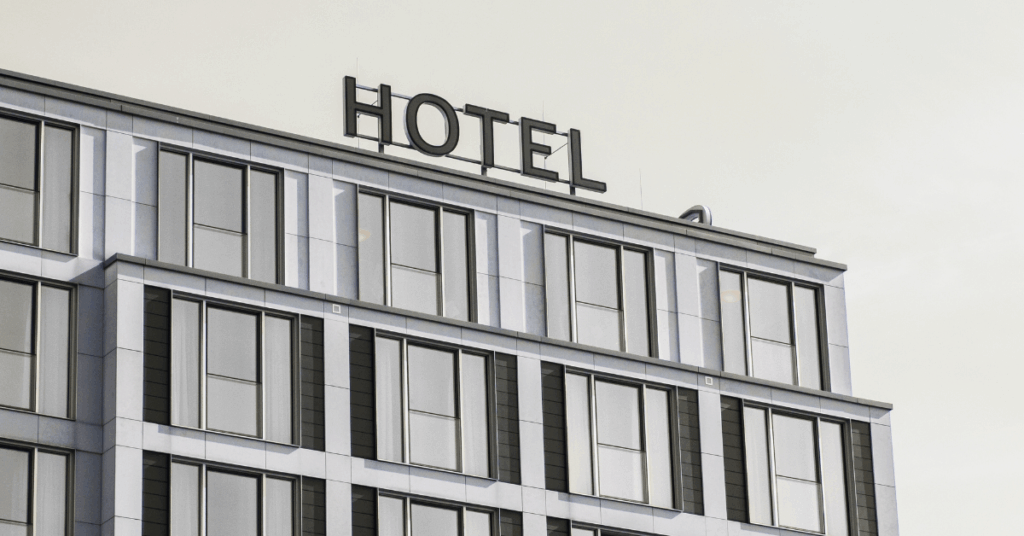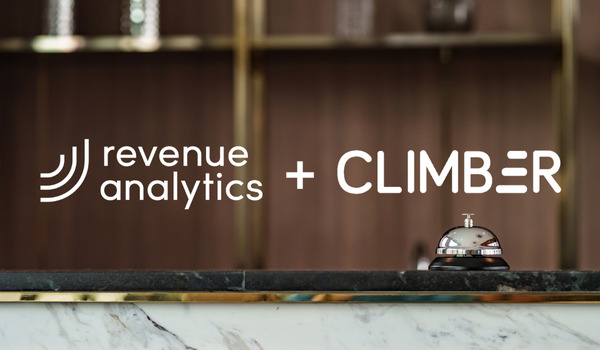Hunter Conference ‘22: Takeaways for Revenue Leaders

“Failure to embrace innovation and technology is the biggest challenge to our industry.”
—George Limbert, President of Red Roof
Owners, managers, and financiers of the hospitality industry converge on Atlanta for the Hunter Hotel Investment Conference each year. My team and I were excited to attend the ’22 event just recently.
Leverage your content to achieve stronger revenue outcomes
While the focus of Hunter is not squarely on revenue management, the data and insights shared there are valuable to revenue leaders and their teams.
If you didn’t make it to the conference, or just want a summary of key RM takeaways, then this event recap is for you.
Spoiler alert: leisure and ADR are looking good, inflation and labor are the big issues, you should pass costs to customers. And embracing innovative technology to optimize profit and achieve more with less is the path to a win.
Feelings vs. Behavior
If looking only at the big themes discussed at the conference…
- Labor force constraints
- Runaway inflation
- Global conflict
- Potential new COVID variants
…“optimism” isn’t the first word that comes to mind.
Hoteliers have been to hell and back these last couple of years, and they have reached new levels of toughness and resilience as a result, but they are still understandably anxious about these headwinds and ominous factors shaping the environment.
Consumers are feeling anxious too. Data shows that sentiment is down.
Adam Sacks is the president of Tourism Economics, an Oxford Economics company, and is a member of the U.S. Department of Commerce, Travel & Tourism Advisory Board.
In his session, Navigating the Perilous Road to Recovery, he reminded attendees to weight consumer behavior more heavily than their feelings when trying to model the future.
If we just study consumer sentiment, which is loaded with anxiety about inflation and fear of the unknown (COVID variants, Ukraine war spillover), we’d be forgiven for thinking no one wants to travel for the foreseeable future.
But if you look at the behavior data, it paints a very different picture – one where the malaise has not had a chilling effect and droves of people are packing their suitcases.
Great News: Leisure Travel is Alive and Well
Leisure demand has come back strong, even booming above 2019 levels in some markets. The reasons why:
- The increased savings behavior observed during the COVID crisis is falling off. People are back to spending their money.
- And, they of course have more money in their pockets than before thanks to stimulus packages, hunkering down, and the general fiscal conservativism that is essential to weathering uncertain times.
- Spend is finally shifting from goods like furniture back to services.
- Public opinion surrounding vaccines and safety is positive as it relates to travel.
- And finally, the pent-up demand the industry has been anticipating has indeed begun to materialize. People are ready to get out of the house, ditch the sweatpants and Zoom lifestyle, and see the world again.
But it’s obviously not all sunshine and rainbows.
Big Challenges: Inflation and Labor
During his session, Sacks underlined a salient point from STR’s data – that hotelier costs have stayed the same but with fewer employees.
While hoteliers recognize, and feel buoyed by, the return of leisure, they are simultaneously feeling the heavy weight of two large and intertwined challenges.
The first challenge is that inflation and wages continue to rise. And secondly, the hospitality industry has been one of the hardest hit by labor shortages.
Solving Inflation: Boost Rates
As costs rise and leisure demand comes back strong, every hotelier has been asking “can I pass on these wage increases and inflation to our guests?”
The answer from attendees at Hunter was a resounding YES!
Unlike the Global Financial Crisis, where hoteliers engaged in a race to the price bottom, they’ve largely held rate during the pandemic, recognizing that dropping prices significantly would do nothing to stimulate demand.
As a result, for the first time in recent history, ADR is recovering faster (to pre-crisis levels) than occupancy.
But while ADR is the “belle” of the recovery ball, there’s still some room for improvement: real ADR (that is ADR adjusted for inflation) is still lagging.
The key question is no longer whether or not you should push rate.
It’s how far can you push rate to boost real ADR and meet your profitability goals during this period of runaway inflation.
How are hoteliers unraveling this? More on that a little later.
Solving Labor: Do More with Less
During the C-Suite Conversations panel with leaders from Radisson, Red Roof, Wyndham, and G6 Hospitality, moderator Chip Rogers hit the group with the most poignant question right out of the gate:
“What is the biggest challenge facing hotels?”
The audience and the esteemed panelist were polled separately, and consensus quickly emerged: workforce shortages.
No surprises there. COVID forced the Hospitality industry to make a lot of tough survival decisions. Many people in the industry left and haven’t come back, leaving hoteliers shorthanded in nearly every department.
With the same amount of work (more work in cases where property portfolios are growing) but fewer hands on deck, everyone has to achieve more with less for the foreseeable future.
But that’s easier said (a thousand times a day!) than done.
The “How”
We know that it’s critical to optimize rates to combat inflation and boost profit. And we know that revenue teams have to achieve more with less to adapt to labor constraints.
But knowing is only half the battle. How will you get it done? Red Roof had the answer.
George Limbert, Red Roof president and C-Suite panelist, surprised everyone with his answer to Chip’s question about the biggest obstacle hoteliers face.
“None of the above,” he said. “Failure to embrace innovation and technology is the biggest challenge to our industry.”
After two years of technology stagnation, the industry appears to have reached an inflection point.
The teams that will emerge from this period of upheaval strong – financially and strategically strong, resilient to future uncertainty, and adaptable to change – are those who choose to be unafraid of innovation and change.
These teams will leverage new RM technology to do the hard work (multi-property management) and the manual work (ex: price updates) for them so they can take back their time and focus the team’s collective efforts on strategic initiatives and cross-department collaboration that will transform RM into the commercial powerhouse of the business.
Billy Gilchrist, Chief Development & Finance Officer from HDG Hotels said it best during the Revenue Strategy breakout session: “We need more strategists, fewer button pushers.”
Teams that instead succumb to the entropy of the status quo, to the lack of innovation in revenue management, will struggle, and see their already-lean team’s time and spirit further bogged down by inflation, the endless stream of price overrides and workstream inefficiencies that has become the “norm” for RMSs.
If you’re interested in learning how to boost real ADR, best practices for passing inflation and wage increases through to customers, or ways to make your shrinking team more impactful, please schedule your demo of N2Pricing RMS today.
Last updated on October 17, 2025






